Rong Yan
Adaptive Tuning of Robotic Polishing Skills based on Force Feedback Model
Oct 23, 2023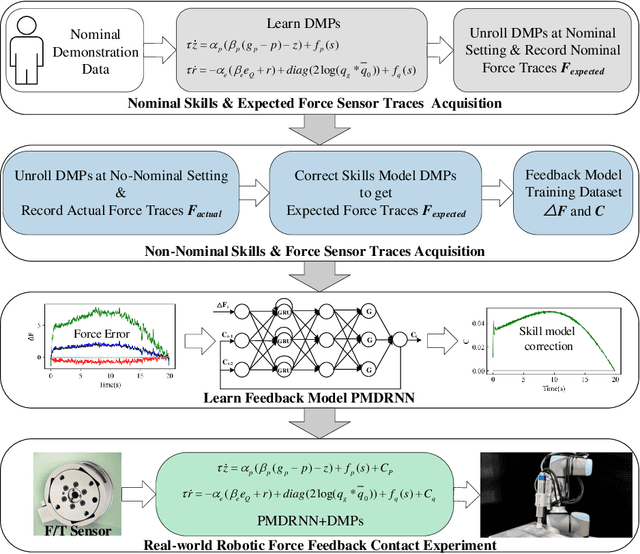
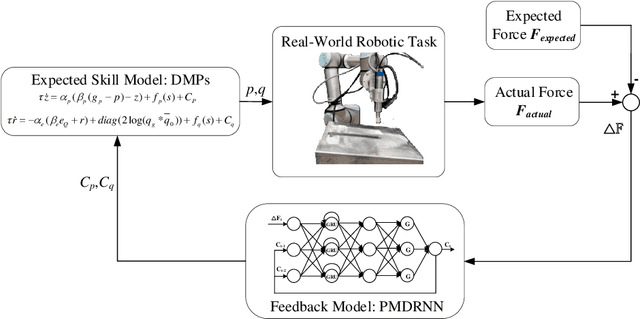
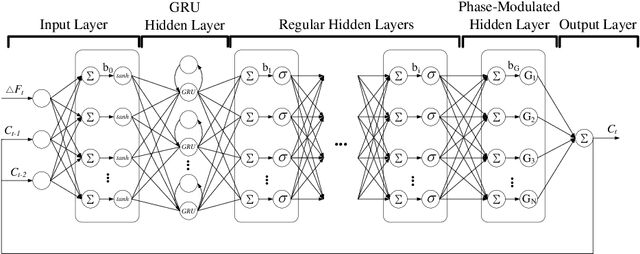
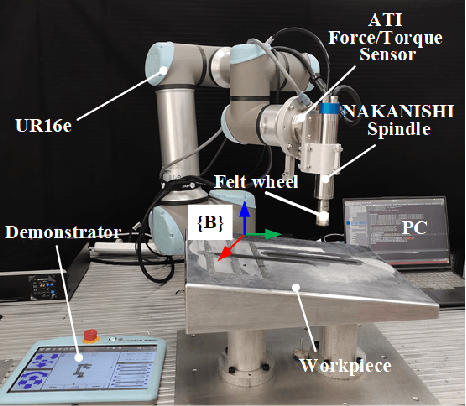
Abstract:Acquiring human skills offers an efficient approach to tackle complex task planning challenges. When performing a learned skill model for a continuous contact task, such as robot polishing in an uncertain environment, the robot needs to be able to adaptively modify the skill model to suit the environment and perform the desired task. The environmental perturbation of the polishing task is mainly reflected in the variation of contact force. Therefore, adjusting the task skill model by providing feedback on the contact force deviation is an effective way to meet the task requirements. In this study, a phase-modulated diagonal recurrent neural network (PMDRNN) is proposed for force feedback model learning in the robotic polishing task. The contact between the tool and the workpiece in the polishing task can be considered a dynamic system. In comparison to the existing feedforward neural network phase-modulated neural network (PMNN), PMDRNN combines the diagonal recurrent network structure with the phase-modulated neural network layer to improve the learning performance of the feedback model for dynamic systems. Specifically, data from real-world robot polishing experiments are used to learn the feedback model. PMDRNN demonstrates a significant reduction in the training error of the feedback model when compared to PMNN. Building upon this, the combination of PMDRNN and dynamic movement primitives (DMPs) can be used for real-time adjustment of skills for polishing tasks and effectively improve the robustness of the task skill model. Finally, real-world robotic polishing experiments are conducted to demonstrate the effectiveness of the approach.
Distribution-Aware Graph Representation Learning for Transient Stability Assessment of Power System
May 12, 2022



Abstract:The real-time transient stability assessment (TSA) plays a critical role in the secure operation of the power system. Although the classic numerical integration method, \textit{i.e.} time-domain simulation (TDS), has been widely used in industry practice, it is inevitably trapped in a high computational complexity due to the high latitude sophistication of the power system. In this work, a data-driven power system estimation method is proposed to quickly predict the stability of the power system before TDS reaches the end of simulating time windows, which can reduce the average simulation time of stability assessment without loss of accuracy. As the topology of the power system is in the form of graph structure, graph neural network based representation learning is naturally suitable for learning the status of the power system. Motivated by observing the distribution information of crucial active power and reactive power on the power system's bus nodes, we thus propose a distribution-aware learning~(DAL) module to explore an informative graph representation vector for describing the status of a power system. Then, TSA is re-defined as a binary classification task, and the stability of the system is determined directly from the resulting graph representation without numerical integration. Finally, we apply our method to the online TSA task. The case studies on the IEEE 39-bus system and Polish 2383-bus system demonstrate the effectiveness of our proposed method.
Synthetic Active Distribution System Generation via Unbalanced Graph Generative Adversarial Network
Aug 02, 2021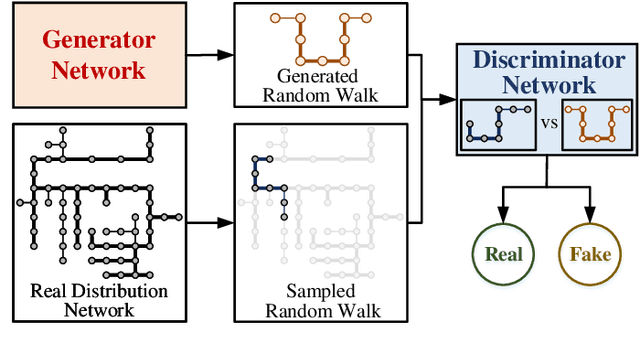
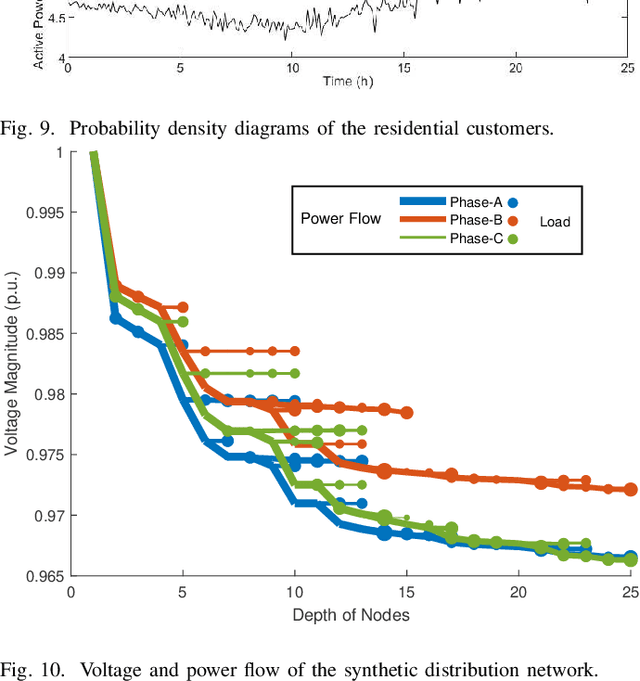
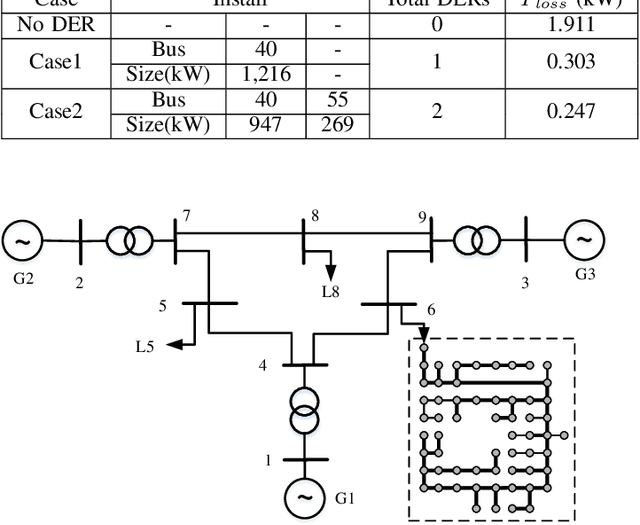
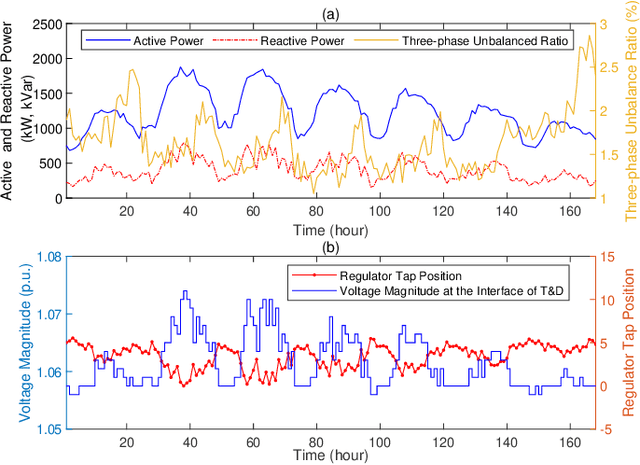
Abstract:Real active distribution networks with associated smart meter (SM) data are critical for power researchers. However, it is practically difficult for researchers to obtain such comprehensive datasets from utilities due to privacy concerns. To bridge this gap, an implicit generative model with Wasserstein GAN objectives, namely unbalanced graph generative adversarial network (UG-GAN), is designed to generate synthetic three-phase unbalanced active distribution system connectivity. The basic idea is to learn the distribution of random walks both over a real-world system and across each phase of line segments, capturing the underlying local properties of an individual real-world distribution network and generating specific synthetic networks accordingly. Then, to create a comprehensive synthetic test case, a network correction and extension process is proposed to obtain time-series nodal demands and standard distribution grid components with realistic parameters, including distributed energy resources (DERs) and capacity banks. A Midwest distribution system with 1-year SM data has been utilized to validate the performance of our method. Case studies with several power applications demonstrate that synthetic active networks generated by the proposed framework can mimic almost all features of real-world networks while avoiding the disclosure of confidential information.
Data-Driven Transient Stability Boundary Generation for Online Security Monitoring
Apr 03, 2020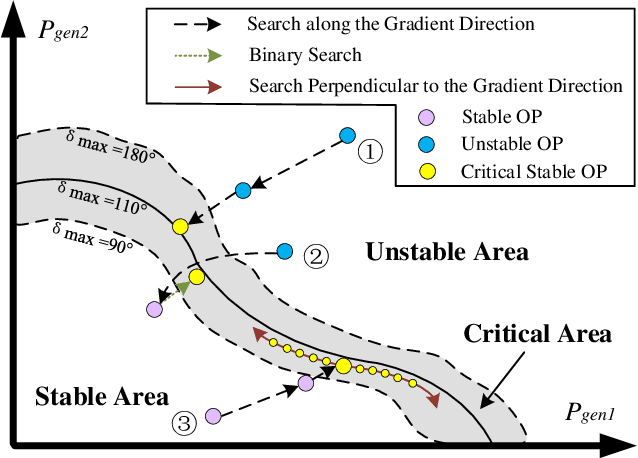
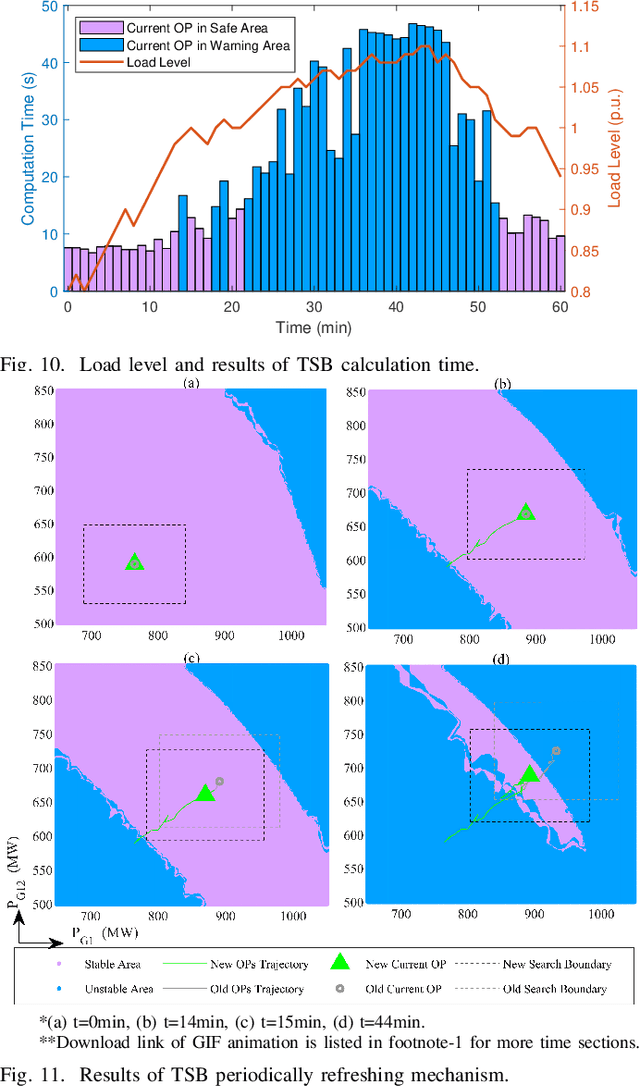
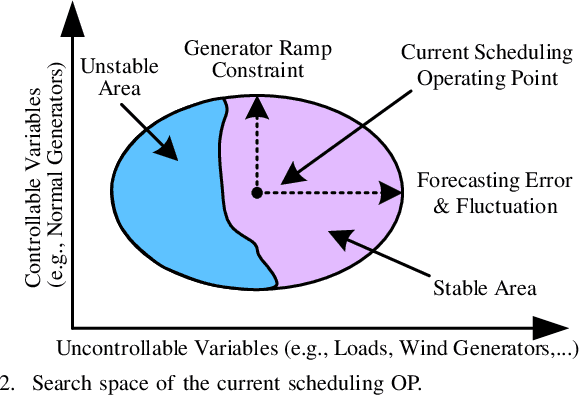
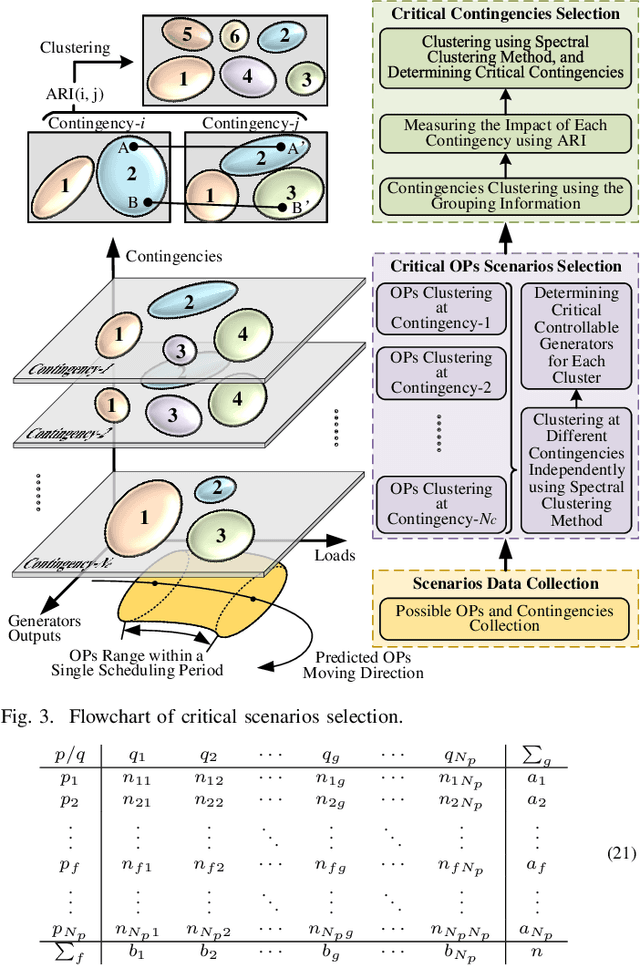
Abstract:Transient stability boundary (TSB) is an important tool in power system online security monitoring, but practically it suffers from high computational burden using state-of-the-art methods, such as time-domain simulation (TDS), with numerous scenarios taken into account (e.g., operating points (OPs) and N-1 contingencies). The purpose of this work is to establish a data-driven framework to generate sufficient critical samples close to the boundary within a limited time, covering all critical scenarios in current OP. Therefore, accurate TSB can be periodically refreshed by tracking current OP in time. The idea is to develop a search strategy to obtain more data samples near the stability boundary, while traverse the rest part with fewer samples. To achieve this goal, a specially designed transient index sensitivity based search strategy and critical scenarios selection mechanism are proposed, in order to find out the most representative scenarios and periodically update TSB for online monitoring. Two case studies validate effectiveness of the proposed method.
NeuNetS: An Automated Synthesis Engine for Neural Network Design
Jan 17, 2019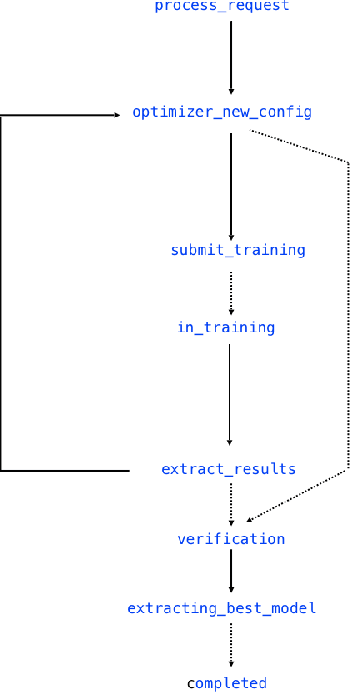
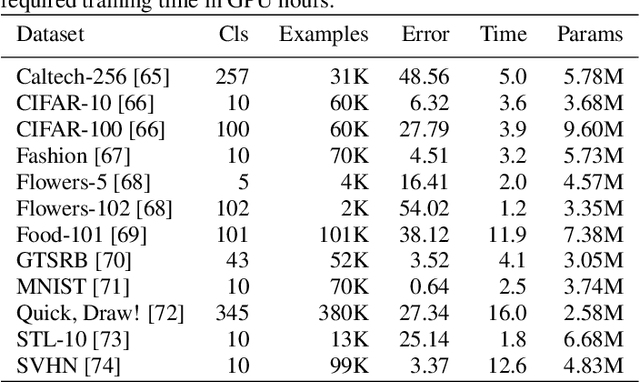
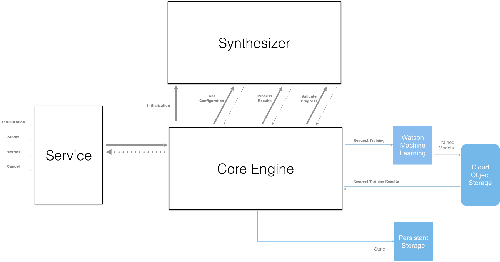
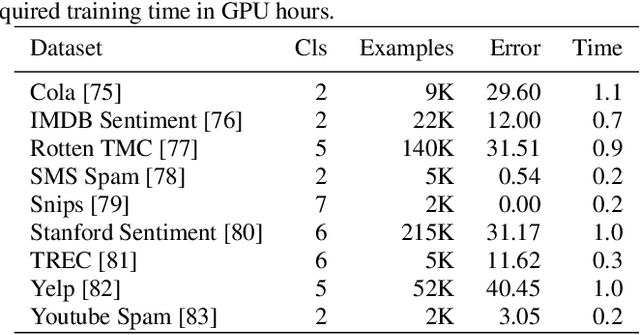
Abstract:Application of neural networks to a vast variety of practical applications is transforming the way AI is applied in practice. Pre-trained neural network models available through APIs or capability to custom train pre-built neural network architectures with customer data has made the consumption of AI by developers much simpler and resulted in broad adoption of these complex AI models. While prebuilt network models exist for certain scenarios, to try and meet the constraints that are unique to each application, AI teams need to think about developing custom neural network architectures that can meet the tradeoff between accuracy and memory footprint to achieve the tight constraints of their unique use-cases. However, only a small proportion of data science teams have the skills and experience needed to create a neural network from scratch, and the demand far exceeds the supply. In this paper, we present NeuNetS : An automated Neural Network Synthesis engine for custom neural network design that is available as part of IBM's AI OpenScale's product. NeuNetS is available for both Text and Image domains and can build neural networks for specific tasks in a fraction of the time it takes today with human effort, and with accuracy similar to that of human-designed AI models.
Understanding the Interaction between Interests, Conversations and Friendships in Facebook
Oct 31, 2012



Abstract:In this paper, we explore salient questions about user interests, conversations and friendships in the Facebook social network, using a novel latent space model that integrates several data types. A key challenge of studying Facebook's data is the wide range of data modalities such as text, network links, and categorical labels. Our latent space model seamlessly combines all three data modalities over millions of users, allowing us to study the interplay between user friendships, interests, and higher-order network-wide social trends on Facebook. The recovered insights not only answer our initial questions, but also reveal surprising facts about user interests in the context of Facebook's ecosystem. We also confirm that our results are significant with respect to evidential information from the study subjects.
Mining Associated Text and Images with Dual-Wing Harmoniums
Jul 04, 2012



Abstract:We propose a multi-wing harmonium model for mining multimedia data that extends and improves on earlier models based on two-layer random fields, which capture bidirectional dependencies between hidden topic aspects and observed inputs. This model can be viewed as an undirected counterpart of the two-layer directed models such as LDA for similar tasks, but bears significant difference in inference/learning cost tradeoffs, latent topic representations, and topic mixing mechanisms. In particular, our model facilitates efficient inference and robust topic mixing, and potentially provides high flexibilities in modeling the latent topic spaces. A contrastive divergence and a variational algorithm are derived for learning. We specialized our model to a dual-wing harmonium for captioned images, incorporating a multivariate Poisson for word-counts and a multivariate Gaussian for color histogram. We present empirical results on the applications of this model to classification, retrieval and image annotation on news video collections, and we report an extensive comparison with various extant models.
 Add to Chrome
Add to Chrome Add to Firefox
Add to Firefox Add to Edge
Add to Edge